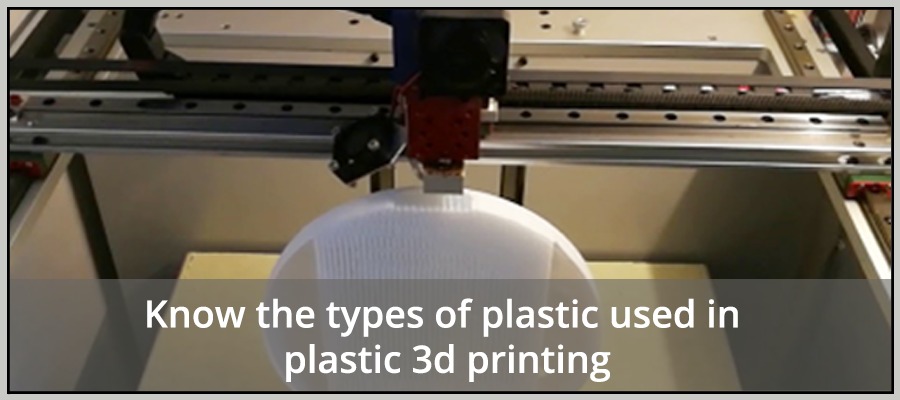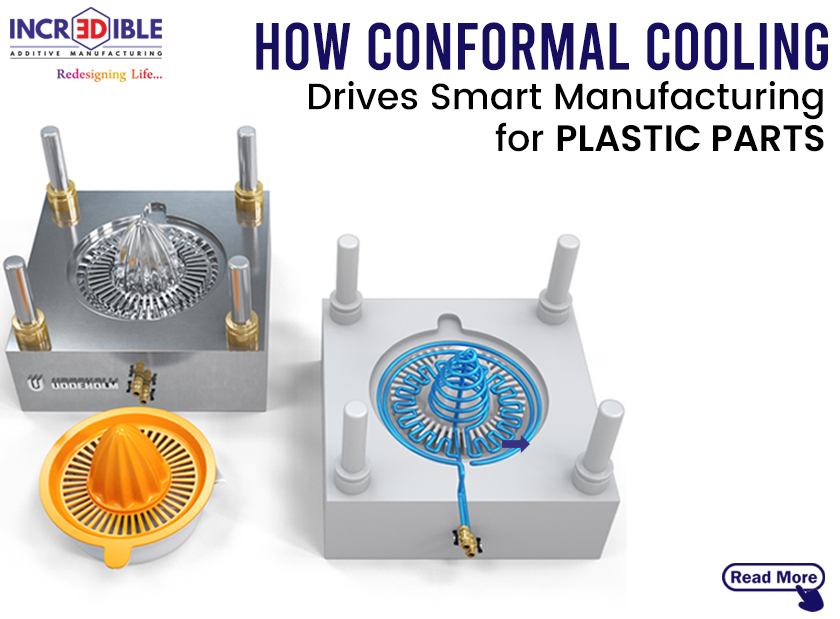A plastic is a material that has the property of being malleable, consisting of synthetic or semi-synthetic compounds (capable of changing its shape). The majority of plastics on the market are absolutely synthetic (most commonly derived from petrochemicals). However, plastics derived from recycled materials such as Polylactic Acid (PLA) are now common on the market due to the increasing environmental concern. Plastics are used in a multitude of products and industries due to their low cost, ease of manufacturing, versatility and water resistance. There are also very common 3D printing plastics in the AM market.
Why plastics are used in additive manufacturing?
The plastic can melt in filament or powder form to mold the item that you are printing layer by layer. It should solidify in resin form to form the object. During the building process, each plastic will need various 3D printing parameters which will give differing properties to parts. Following are some types of plastic used in plastic 3d printing
1.ABS
The most widely used 3D printing plastics are ABS filaments. It is seen in the cases of cars, appliances, and cell phone bodywork. It is a thermoplastic that includes a polybutadiene-based elastomer base, making it more durable and resistant to shocks. For powder bed processes such as SLS, and liquid form for SLA and PolyJet technology, ABS can also be found in powder form. In 3D printing, ABS is used when heated to between 230oC and 260oC..It is a durable material, capable of withstanding temperatures from -20oC to 80oC comfortably. It is a reusable material, in addition to its high strength, which can be welded using chemical processes. ABS, however is not biodegradable and shrinks when in contact with sunlight, so it is important to heat the printing platform to prevent warping. In addition, when printing with ABS, it is advised to use a closed chamber 3D printer to limit particle emissions.
2.PLA
Known as polylactic acid, or PLA, this material, unlike ABS, has the advantage of being biodegradable. Using renewable raw materials such as corn starch, PLA is crafted. PLA is one of the simplest to print materials, but after 3D printing it has a tendency to shrink slightly. PLA is often printed at a lower temperature, from 190oC and 230oC, than ABS. PLA is consistent, convenient to use and comes in a wide range of colours, making it ideal for FDM 3D printing.
3.Polycarbonate (PC)
A high-strength material designed for engineering applications is polycarbonate (PC). The material has strong temperature resistance, capable of withstanding up to around 150 ° c of any physical deformation. PC, however is prone to moisture absorption from the air, which can impair efficiency and resistance to printing. Therefore, PCs must be stored in containers that are airtight. The Additive Manufacturing industry values the PC extremely for its power and clarity.It has a much lower density than glass, which makes it particularly interesting for optical parts, protective screens or decorative objects to be produced.
4.High Performance Polymers (PEEK, PEKK, ULTEM)
The evolution of 3D printing technology has led to comprehensive research on printing materials, allowing a wide variety of high-performance filaments with mechanical properties similar to those of metals to be produced. There are a variety of high-performance 3D printing plastics, such as PEEK, PEKK or ULTEM, characterised by families such as polyaryletherketones (PAEK) or polyetherimides (PEI).These filaments have very high mechanical and thermal resistance and at the same time, are very heavy and much lighter than other metals. In the aerospace, automobile and medical industries, these properties make them very desirable.
5.Polypropylene (PP)
Polypropylene is another thermoplastic commonly used in aerospace, specialist clothing and hundreds of daily item processing industries. PP is known for its abrasion resistance and shock absorption ability, as well as relative rigidity and flexibility. Nevertheless the material’s disadvantages include its low temperature tolerance and UV ray susceptibility, which can cause it to extend. Because of this, some manufacturers have produced alternative PP types, simili-propilenos, which are physically and mechanically stronger.
6.Nylon
Objects made from polyamides (nylon) are commonly produced with SLS technology from a fine white, granular powder. However, there are several types of the materials that are also available in filaments used throughout fused deposition modelling, such as nylon (FDM).. Polyamides can be used to produce pieces that come into contact with food because of their biocompatibility (except foods that contain alcohol). Polyamides are made up of semi-crystalline materials that have a good combination of chemical and mechanical properties, providing good stability, rigidity, durability and resistance to shock. Such benefits mean that the material has multiple uses across industries and has a high level of detail. Polyamides are used in the manufacture of gear, pieces for the aerospace industry, the automobile market, robotics, surgical prostheses and injection moulds due to their high efficiency.
Conclusion:
Owing to their comparatively low cost, ease of processing, flexibility, and imperviousness to water; plastics have been adopted in a large and ever-expanding range of products. They can be found in simple products as paper clips or as complicated products as airplanes. There is a vast source of different plastic materials available across a widespread production spectrum. 3D Printing is one of the most new and innovative areas of production. As new 3D printing applications are uncovered almost every day, the 3D printing technology has already been used to manufacture a wide variety of plastic objects. Incredible AM Pvt. Ltd With our top of the range plant in Pune, India, is one of the pioneers in India providing metal 3D printing solutions. 3D Incredible is a service bureau that offers solutions from idea, design, printing and post-processing to quality management and assurance for additive manufacturing certified with ISO 9001, ISO 13485 & AS 9100D certifications.



